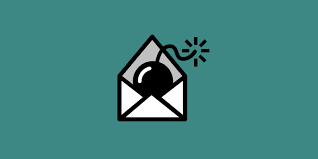Introduction
Email bombing, also known as subscription bombing or email flooding, is a malicious attack where a large number of unwanted emails are sent to overwhelm an individual's or organization's email inbox. This relentless bombardment of emails can disrupt normal communication and cause frustration and inconvenience. If you've become a victim of email bombing, it's essential to understand the duration of such attacks and the steps you can take to survive and mitigate their impact. In this comprehensive guide, we'll explore the topic of email bombing, discuss its duration, and provide effective countermeasures to protect yourself or your organization. By the end of this article, you'll be equipped with the knowledge to navigate and overcome email bombing attacks.
Understanding Email Bombing
Email bombing involves the intentional flooding of an email inbox with a massive volume of emails. The attackers often utilize automated scripts or bots to send emails repeatedly to the targeted email address. These emails can originate from various sources, including malicious individuals, organized hacking groups, or even automated systems.
Duration of Email Bombing Attacks
The duration of an email bombing attack can vary depending on several factors:
1. Motivation of the Attacker: The duration of the attack may depend on the motivation of the attacker. If the goal is to disrupt communication or cause harm, the attack may last for an extended period. However, if the attacker's objective is a quick nuisance or revenge, the attack might be relatively short-lived.
2. Security Measures in Place: The effectiveness and duration of an email bombing attack can be influenced by the security measures in place. Robust spam filters, email server protections, and advanced threat detection systems can help mitigate the impact and shorten the duration of the attack. 3. Countermeasures Taken: The actions taken by the victim or the email service provider can significantly impact the duration of the attack. By implementing appropriate countermeasures, such as adjusting spam filters, reporting the attack, or seeking assistance from the email service provider, the victim can expedite the resolution.
Countermeasures Against Email Bombing
If you find yourself facing an email bombing attack, consider the following countermeasures:
1. Report the Attack: Contact your email service provider or system administrator to report the attack. They can investigate the incident, block the sender if necessary, and assist in resolving the issue.
2. Adjust Spam Filters: Configure your email client or server to strengthen spam filters and reduce the impact of incoming malicious emails. Adjust the settings to send suspicious emails directly to the spam or junk folder.
3. Enable Two-Factor Authentication: Protect your email account by enabling two-factor authentication. This adds an extra layer of security by requiring a verification code in addition to your password.
4. Regularly Change Passwords: Change your email account passwords regularly to minimize the risk of unauthorized access. Use strong, unique passwords that are not easily guessable.
5. Educate and Train Users: Educate yourself and others about email bombing attacks, including recognizing suspicious emails and knowing how to report and handle such incidents. Awareness and training can help minimize the impact and increase resilience.
Conclusion
Email bombing attacks can be disruptive and distressing, but with the right knowledge and proactive measures, you can survive and mitigate their impact. By understanding the duration of email bombing attacks and implementing effective countermeasures, you can protect your inbox, maintain communication, and reduce the risk of falling victim to these malicious activities. Stay vigilant, report incidents promptly, and leverage security measures to safeguard yourself or your organization against email bombing attacks.



